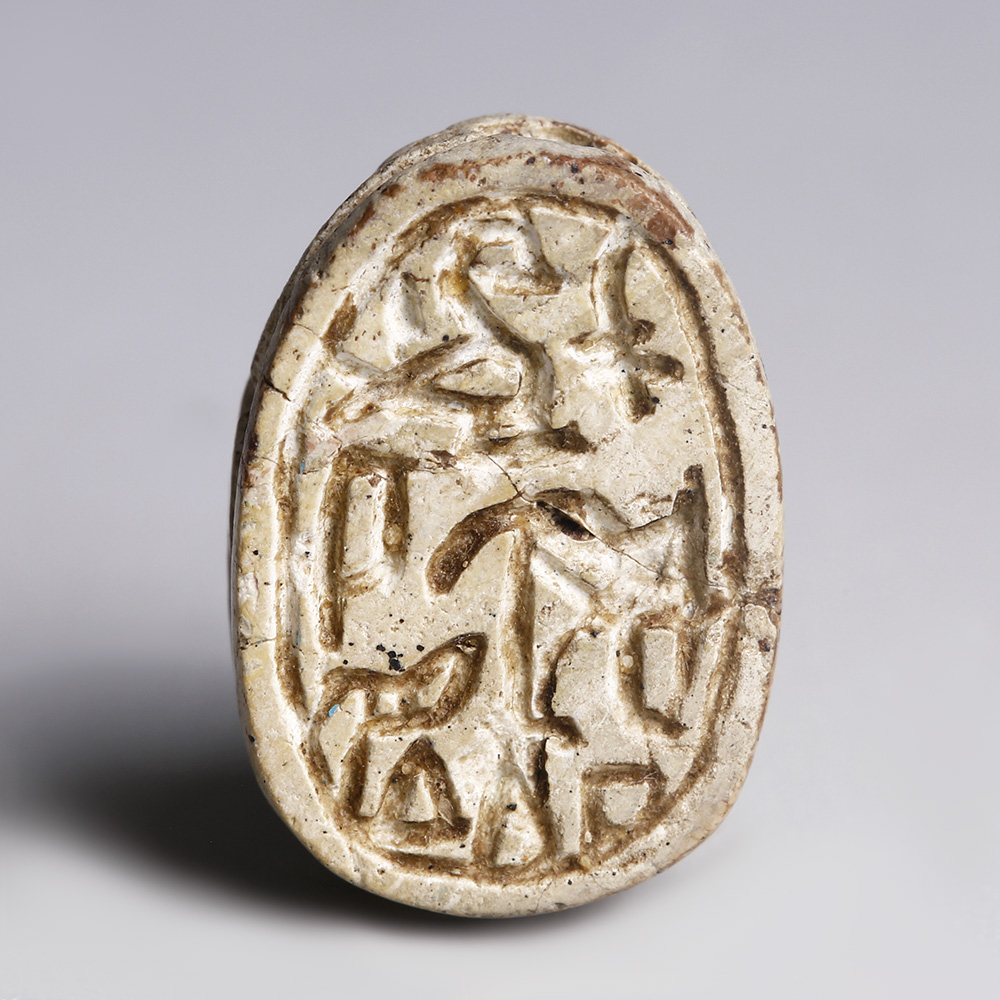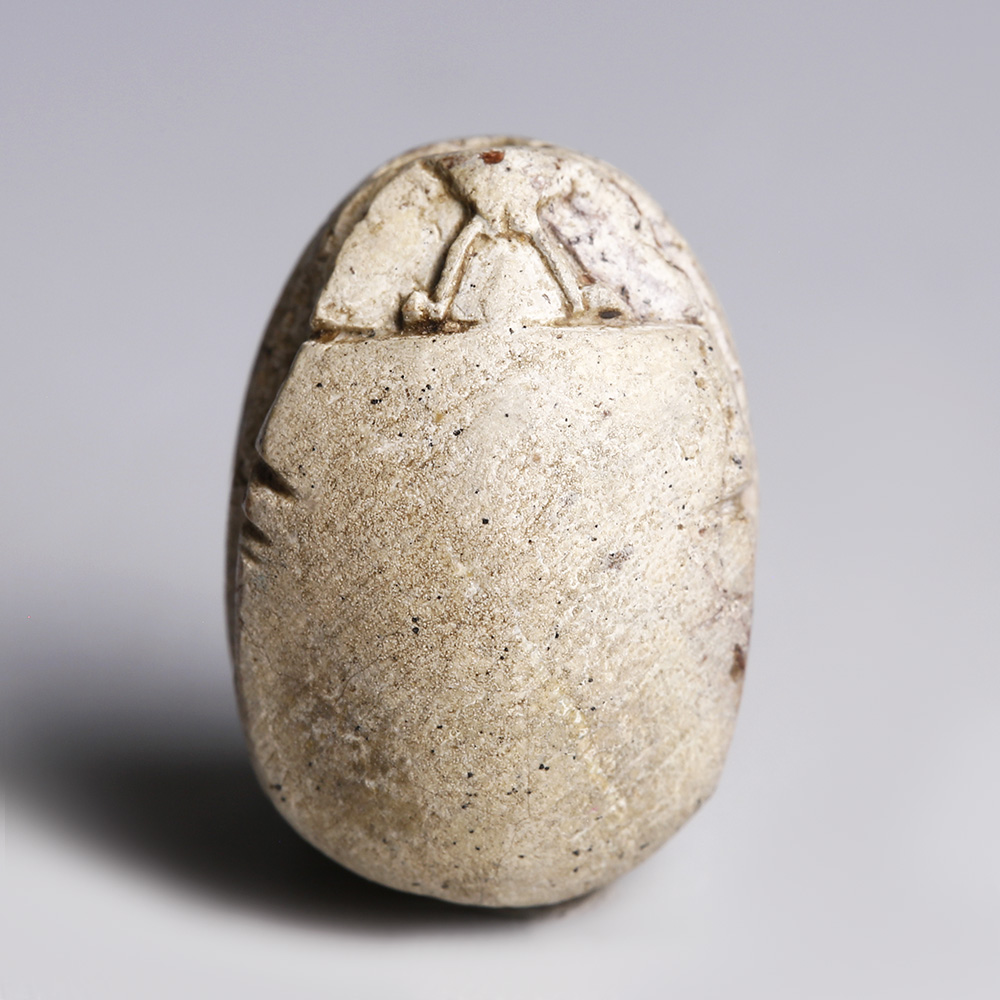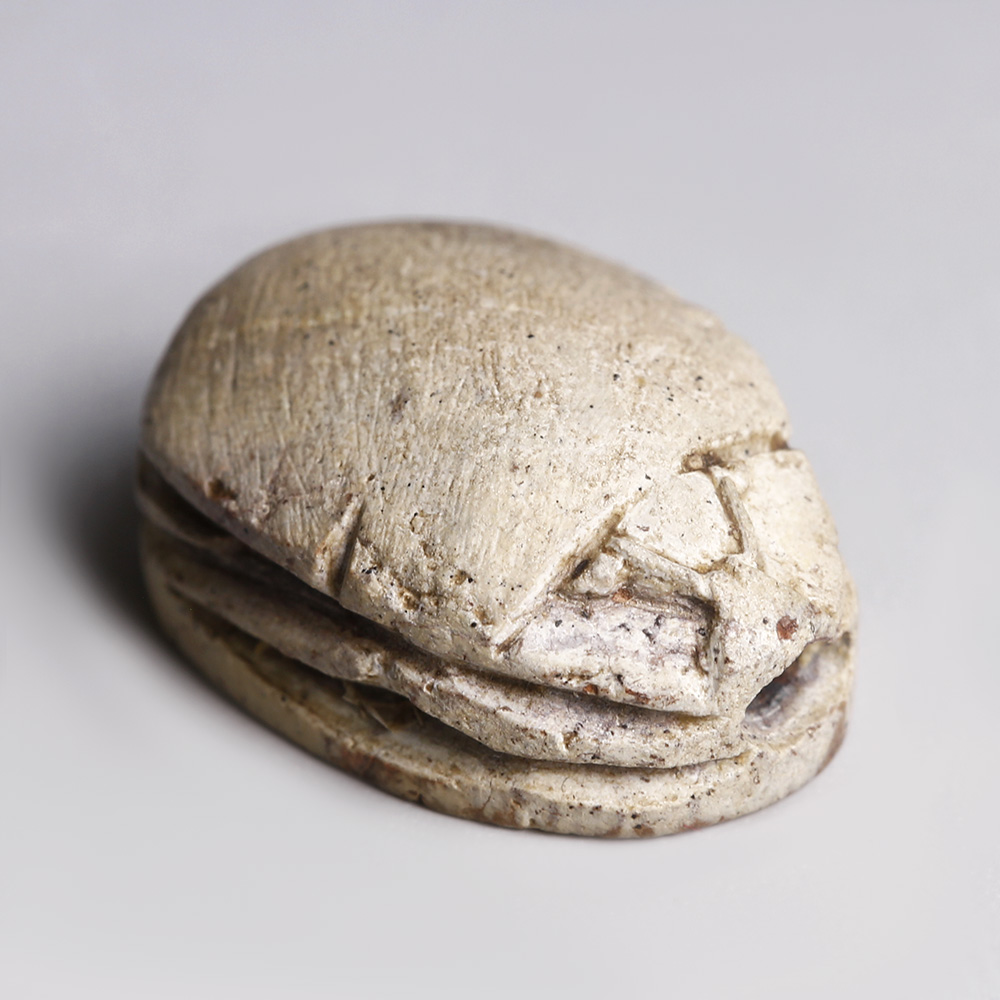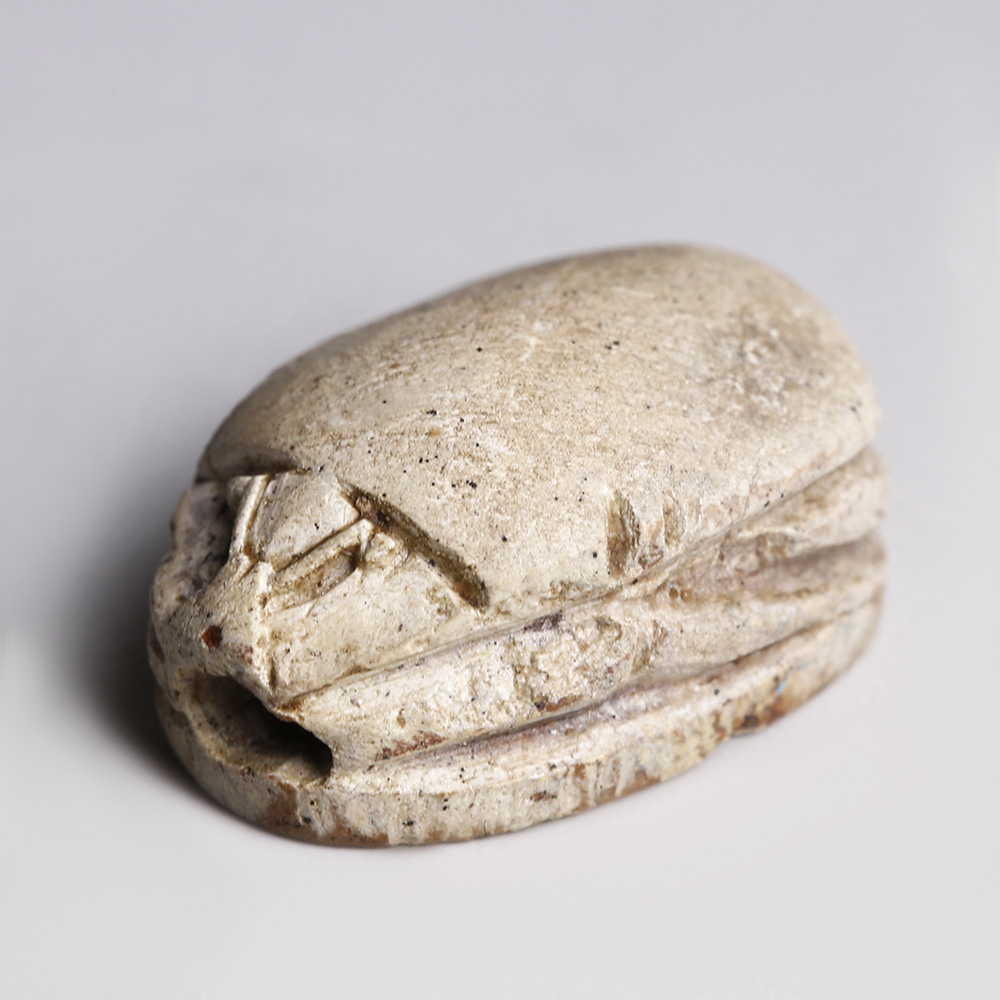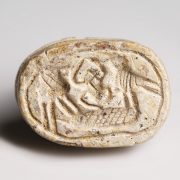The term Hyksos refers largely to the foreign rulers who occupied Upper and Middle Egypt during the 15th Dynasty. The term is a bastardisation of an earlier Greek title Ὑκουσσώς (Hykoussôs). The complete list of Hyksos kings and their lineage is uncertain. Not considered legitimate rulers of Egypt, they are often omitted from King lists. Names of Hyksos kings are known from the Turin King list, a hieratic papyrus from the reign of Ramesses II, the records of the historian Manetho and countless scarab seals. The name of this Hyksos prince is attributed to various scarab seals, rather than being mentioned on a particular king list.
To find out more about Ancient Egyptian amulets please see our relevant blog post: Egyptian Amulets and their Meanings.
